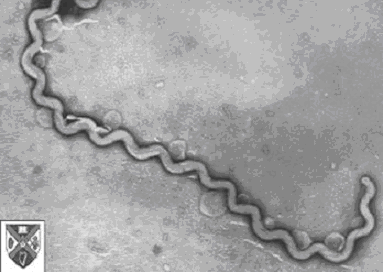|
|
A bacterium is a
single-cell organism. There are three groups of bacteria based on how they
react to oxygen: aerobic, anaerobic, facultative anaerobes. They live in water
and on land. Some breathe carbon dioxide.
Penicillin kills
bacteria by making it lose its ability to synthesize (a.k.a. reproduce). A
bacterium has a cell wall, cell membrane, plasmid, flagella, chromosome,
cytoplasm, and ribosome.
One square
centimeter of your skin has 100,000 bacteria on it. That means every time
you clap your hands or rub them, you may kill thousands of bacteria.
Some bacteria
are good for you, and some bacteria are bad for you and can cause diseases.

Image used without permission.
http://www.ucmp.berkeley.edu/bacteria/bacteria.html
|